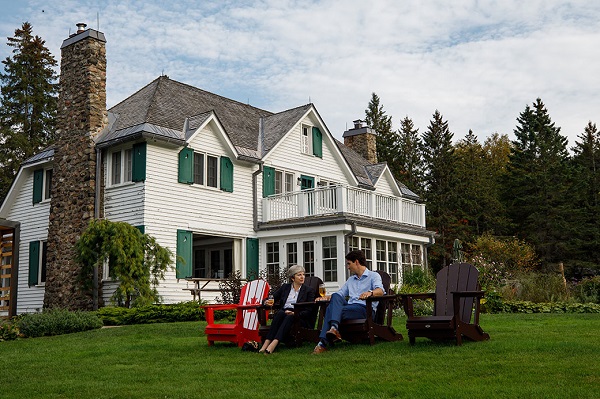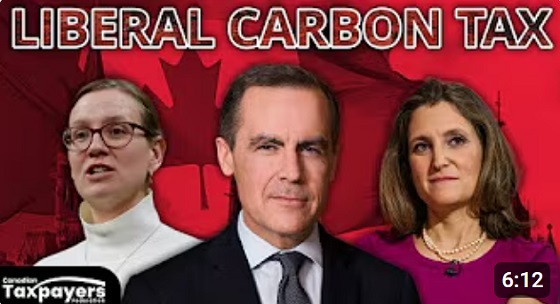Business
Taxpayers on the hook for millions in renovations at Trudeau’s mansions

“While there were multimillion-dollar renos being done to Trudeau’s mansion, housing prices have doubled for most ordinary working Canadians”
Taxpayers have been hit with a hefty, multimillion-dollar price tag to renovate Prime Minister Justin Trudeau’s mansion on the grounds of Rideau Hall in recent years.
Renovations at Rideau Cottage, the mansion where Trudeau has lived since being elected in 2015, cost taxpayers more than $5 million between 2016-17 and 2023-24, according to access-to-information records obtained by the Canadian Taxpayers Federation.
“While there were multimillion-dollar renos being done to Trudeau’s mansion, housing prices have doubled for most ordinary working Canadians,” said Kris Sims, CTF Alberta Director. “Trudeau needs to explain why this cost taxpayers so much.”
Last year, renovations at Rideau Cottage cost taxpayers $1.3 million.
That’s enough money to cover the annual grocery bills of 81 Canadian families, according to Canada’s Food Price Report.
Taxpayers have been on the hook for an average of $630,000 in annual renovation costs at Rideau Cottage since Trudeau moved into the two-storey, 22-room mansion.
Renovations have included improvements to the tennis court and “powder room,” thousands spent on painting, various RCMP security upgrades, new appliances, wall and roof repairs, paving and landscaping services and tree stump removal.
Taxpayers have also been billed for 10 piano tunings, according to the records.
“Does the prime minister’s powder room have a gold toilet? How can these upgrades cost this much?” Sims said. “Taxpayers don’t expect Trudeau to sleep in a tent, but racking-up reno bills costing Canadians more than half a million dollars per year is excessive.”
In addition to the $5 million in renovations at Rideau Cottage, taxpayers have also been on the hook for millions in renovations at Harrington Lake, the prime minister’s lakeside cottage estate.
In 2022, the CTF reported the National Capital Commission, which manages Canada’s six official residences, was spending $11 million on renovations at Harrington Lake.
Included in those costs was the construction of a backup cottage on the property for $2.5 million, and a kitchen renovation that cost more than $700,000.
The federal government spent an additional $6 million on renovations at Harrington Lake between 2016-17 and 2019-20, according to a 2021 NCC report.
Taxpayers were also on the hook for $1 million in renovations at 24 Sussex during the same period, despite the fact the property has sat vacant since 2015.
Despite long-standing claims that Canada’s official residences are subject to “chronic underfunding,” the CTF previously reported the NCC spent $135 million renovating the properties between 2006 and 2022.
“Canadians need to know why the NCC, a glorified parks and rec department that plants flowers in Ottawa, manages to blow millions and millions of dollars on these swanky buildings without much to show for it,” Sims said. “Why are there now three official residences for our one prime minister, and why did taxpayers pay for an entirely new mansion up at Harrington Lake? Who is living in that new house and why did it cost so much?”
2025 Federal Election
MEI-Ipsos poll: 56 per cent of Canadians support increasing access to non-governmental healthcare providers

-
Most believe private providers can deliver services faster than government-run hospitals
-
77 per cent of Canadians say their provincial healthcare system is too bureaucratic
Canadians are increasingly in favour of breaking the government monopoly over health care by opening the door to independent providers and cross-border treatments, an MEI-Ipsos poll has revealed.
“Canadians from coast to coast are signalling they want to see more involvement from independent health providers in our health system,” explains Emmanuelle B. Faubert, economist at the MEI. “They understand that universal access doesn’t mean government-run, and that consistent failures to deliver timely care in government hospitals are a feature of the current system.”
Support for independent health care is on the rise, with 56 per cent of respondents in favour of allowing patients to access services provided by independent health entrepreneurs. Only 25 per cent oppose this.
In Quebec, support is especially strong, with 68 per cent endorsing this change.
Favourable views of accessing care through a mixed system are widespread, with three quarters of respondents stating that private entrepreneurs can deliver healthcare services faster than hospitals managed by the government. This is up four percentage points from last year.
Countries like Sweden and France combine universal coverage with independent providers and deliver faster, more accessible care. When informed about how these health systems run, nearly two in three Canadians favour adopting such models.
The poll also finds that 73 per cent of Canadians support allowing patients to receive treatment abroad with provincial coverage, which could help reduce long wait times at home.
Common in the European Union, this “cross-border directive” enabled 450,000 patients to access elective surgeries in 2022, with costs reimbursed as if they had been treated in their home country.
There’s a growing consensus that provincial healthcare systems are overly bureaucratic, with the strongest agreement in Alberta, B.C., and Quebec. The proportion of Canadians holding this view has risen by 16 percentage points since 2020.
Nor do Canadians see more spending as being a solution: over half say the current pace of healthcare spending in their province is unsustainable.
“Governments shouldn’t keep doubling down on what isn’t working. Instead, they should look at what works abroad,” says Ms. Faubert. “Canadians have made it clear they want to shift gears; now it’s up to policymakers to show they’re listening.”
A sample of 1,164 Canadians aged 18 and older was polled between March 24th and March 28th, 2025. The margin of error is ±3.3 percentage points, 19 times out of 20.
The results of the MEI-Ipsos poll are available here.
* * *
The MEI is an independent public policy think tank with offices in Montreal, Ottawa, and Calgary. Through its publications, media appearances, and advisory services to policymakers, the MEI stimulates public policy debate and reforms based on sound economics and entrepreneurship.
2025 Federal Election
POLL: Canadians say industrial carbon tax makes life more expensive

The Canadian Taxpayers Federation released Leger polling showing 70 per cent of Canadians believe businesses pass on most or some of the cost of the industrial carbon tax to consumers. Meanwhile, just nine per cent believe businesses pay most of the cost.
“The poll shows Canadians understand that a carbon tax on business is a carbon tax on Canadians that makes life more expensive,” said Franco Terrazzano, CTF Federal Director. “Only nine per cent of Canadians believe Liberal Leader Mark Carney’s claim that businesses will pay most of the cost of his carbon tax.
“Canadians have a simple question for Carney: How much will your carbon tax cost?”
The federal government currently imposes an industrial carbon tax on oil and gas, steel and fertilizer businesses, among others.
Carney said he would “improve and tighten” the industrial carbon tax and extend the “framework to 2035.” Carney also said that by “changing the carbon tax … We are making the large companies pay for everybody.”
The Leger poll asked Canadians who they think ultimately pays the industrial carbon tax. Results of the poll show:
- 44 per cent say most of the cost is passed on to consumers
- 26 per cent say some of the cost is passed on to consumers
- 9 per cent say businesses pay most of the cost
- 21 per cent don’t know
Among those decided on the issue, 89 per cent of Canadians say businesses pass on most or some of the cost to consumers.
“Carbon taxes on refineries make gas more expensive, carbon taxes on utilities make home heating more expensive and carbon taxes on fertilizer plants increase costs for farmers and that makes groceries more expensive,” Terrazzano said. “A carbon tax on business will push our entrepreneurs to cut production in Canada and increase production south of the border and that means higher prices and fewer jobs for Canadians.”
-

 2025 Federal Election2 days ago
2025 Federal Election2 days agoNo Matter The Winner – My Canada Is Gone
-

 2025 Federal Election2 days ago
2025 Federal Election2 days agoASK YOURSELF! – Can Canada Endure, or Afford the Economic Stagnation of Carney’s Costly Climate Vision?
-

 Alberta2 days ago
Alberta2 days agoMade in Alberta! Province makes it easier to support local products with Buy Local program
-

 2025 Federal Election2 days ago
2025 Federal Election2 days agoCSIS Warned Beijing Would Brand Conservatives as Trumpian. Now Carney’s Campaign Is Doing It.
-

 2025 Federal Election1 day ago
2025 Federal Election1 day agoInside Buttongate: How the Liberal Swamp Tried to Smear the Conservative Movement — and Got Exposed
-

 Alberta2 days ago
Alberta2 days agoProvince to expand services provided by Alberta Sheriffs: New policing option for municipalities
-

 Bruce Dowbiggin1 day ago
Bruce Dowbiggin1 day agoIs HNIC Ready For The Winnipeg Jets To Be Canada’s Heroes?
-

 Dr. Robert Malone1 day ago
Dr. Robert Malone1 day agoThe West Texas Measles Outbreak as a Societal and Political Mirror








